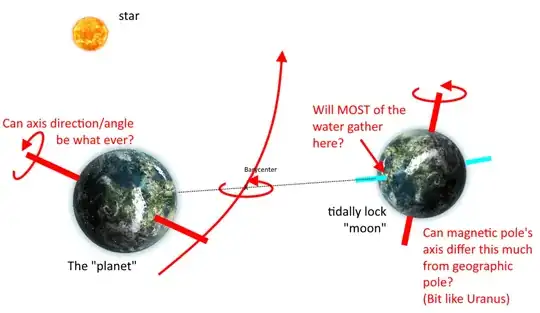I tried to do my homework and actually thanks to this question and answer, I found myself to this site. But I just found more questions :)
Basically the setting would be close to what Earth - Moon is, but both objects being habitable and with 1G (Earth's gravity).
Preferably one of these would be tidally locked to another but neither to the star, so both would experience day/night cycle.
(I understood that if both are tidally locked to each other like Pluto and Charon, their tidal waves would slow them down and they would spiral into each other?)
First, could this work? Another spinning freely while another tidal locked to another?
As rotating axis of the tidally locked "moon" would have to be set, can the "planet" have it just about anyway imaginable? For example its pole pointing at the locked "moon"?
"Moon's" surface that is pointing at the "planet", would it be just ocean so deep there is no dry land and would another side be barren without any bodies of water?
My initial plan would be to have my world in this tidally locked "moon" so that another side would constantly see the "planet" while another would not. The magnetic axis would point towards the "planet", let's call it the "north pole". I would have the cultural center of this world at the magnetic pole but I am not sure if the "north pole" would be just ocean.
- Would rotating around barycenter cause seasons as the distance from the star shifts a bit constantly? Or should I throw in an elliptical orbit too?
Thanks in advance!
